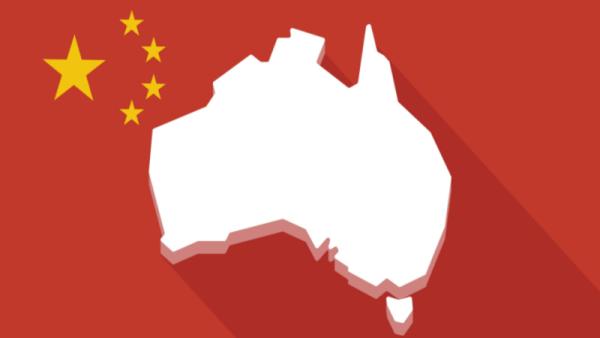Blablo101 / Shutterstock

James Laurenceson, Director, Australia-China Relations Institute, University of Technology Sydney |
This article appeared in China Daily on August 12 2022.
In the aftermath of the visit to Taiwan by US House of Representatives Speaker Nancy Pelosi, the Australia-China relationship is once again inflamed.
This follows a modest thawing in bilateral ties after the new government, led by Prime Minister Anthony Albanese, took office in Canberra in May.
The temptation on both sides will be to interpret fast-unfolding events through the same sweeping frames applied in recent years. For Beijing, this means seeing Canberra as nothing more than a lapdog of Washington.
For Canberra, it means pigeon-holing Beijing as an irresponsible regional actor that is prone to over-reaction and using coercive measures to get its way.
But a careful study of the timeline would go a good way to prompting both sides to pause and reassess. The alternative is a destructive, escalatory spiral that is fuelled by misunderstanding, fear and indignation.
Pelosi touched down in Taipei late at night local time on August 2. The immediate response of Australia’s foreign minister, Penny Wong, was to hit breakfast talkback radio to urge ‘all parties’ to de-escalate tensions, reiterate Australia’s one-China policy and discourage ‘unilateral changes to the status quo’. The party most obviously disrupting the status quo was the US.
Wong also declined to endorse Pelosi’s visit, saying only that ‘the level of US engagement with their Taiwanese counterparts is a matter for them’. Beijing surely could not have wished for more.
Here was Australia sounding more like Indonesia or India; the shift in tone compared to the former Scott Morrison government was stark.
That evening Wong flew to Cambodia for two days of ASEAN-led meetings.
On August 4 she used a doorstop in Phnom Penh to repeat the same messages from a day earlier, also drawing attention to a just-released statement by ASEAN foreign ministers that had expressed ‘similar views’. That statement, too, had used the language of ‘all parties’.
The New York Times judged Wong’s insistent formulation newsworthy, presumably because rather than being full-throated in support of its security ally, the Australian foreign minister had ‘appeared to signal that China and the United States should calm things down’.
The US Secretary of State, Antony Blinken, meanwhile, was busy issuing a statement with G7 foreign ministers that homed in on China for criticism.
But late in the afternoon on August 4, China started firing off ballistic missiles into the waters around Taiwan, as well as into Japan’s claimed Exclusive Economic Zone.
It was only then that Wong changed course, issuing on August 5 a media release that described China’s actions as ‘disproportionate and destabilising’.
On August 6, following a trilateral strategic dialogue involving Australia, the US and Japan, a ministerial-level meeting first instituted in 2005, Wong joined with Secretary Blinken and Japanese Foreign Minister Hayashi Yoshimasa to condemn the missile launches and urge China to cease military exercises.
But even then, unlike the G7 statement, there was no reference to the Washington talking point that Pelosi’s visit was ‘normal and routine’. It is not too much of a stretch to imagine that Wong might have resisted its inclusion.
This week, Australia’s defence minister, Richard Marles, again declined to endorse Pelosi’s trip.
In short, if Beijing was paying close attention, it would find compelling evidence that the Australian government has simply been responding to the Chinese actions.
Of course, Beijing may still reject Canberra’s assessment that its actions were ‘disproportionate’, and protest accordingly.
But the facts do not support a lazy interpretation that Canberra is blindly following Washington.
There are lessons from the timeline for Canberra too.
My own conversation with a Chinese diplomat in the afternoon of August 3, when Pelosi was still in Taiwan, displayed a cognizance that the Australian government’s initial response had been restrained.
And on the evening of August 5, remarks by the Chinese embassy responding to Wong’s media release a few hours earlier were a mile away from a ‘wolf warrior’ attack, heaping blame on the US but, in regard to Canberra, only saying that ‘we hope the Australian side could get a clear understanding of the cause and nature of the current crisis…’.
It was after the joint Australia-US-Japan statement on August 6 that the embassy deployed much stronger language, alleging that in singling China out for criticism but not the US, ‘the Australian side has condemned the victim along with the perpetrators’.
Beyond criticizing live-fire responses, extending some strategic empathy to Beijing should not be beyond Canberra’s capacity.
Even US commentators concede that under the Trump and Biden administrations Washington has steadily been making its commitment to a one-China policy, the political foundation of US-China relations, ever more elastic.
In October last year, China’s Foreign Minister Wang Yi called on the US to pursue a ‘real one-China policy’, not a ‘fake’ one.
And that Japan’s ugly history of forcing China’s imperial Qing Dynasty government to cede Taiwan in 1895, and colonizing it until 1945 is matter of historical record.
It is not too late for cool heads in Canberra and Beijing to prevail.
Author
Professor James Laurenceson is Director of the Australia-China Relations Institute at the University of Technology Sydney.


